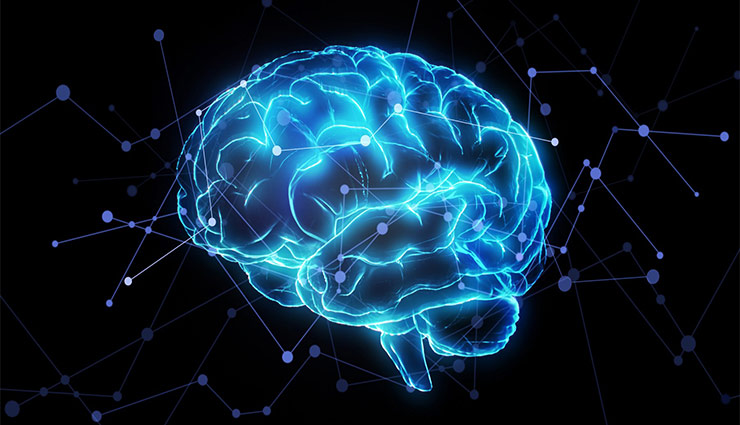Have you ever asked yourself what happens when you think in your body and brain? Answering this question is more complex than you think, and it has occupied the minds of scientists for several decades, and various researchers are searching for the answer. This isn’t easy to discuss, but we can combine what we know about thought and the thinking process and create a coherent and clear picture to understand the matter. So stay with us in this article.
What do you think?
The first problem with describing what happens in the body when thinking is that there is no standard and precise definition of “thought.” At its simplest, you might say that thought is what we tell ourselves. Maybe this morning, when you were in bed, you said to yourself, “I don’t want to get up,” which counts as a thought. Now let’s analyze this thought and try to understand what it is.
Did the thought “I don’t want to get out of bed” pop into your head spontaneously, or did something trigger it? Is this thought the result of a physical process in your brain or a manifestation of something more profound, like the human spirit? As you can see, there are many questions, and depending on who you ask, you will get a different answer.
Is thought a physical or non-physical phenomenon?
While scientists using the reductionist theory predict that our thoughts are physical and can be explained by chemical changes in the brain, philosophers and theorists may take a more dualistic view and argue that the mind is separate from the body. Therefore, Thoughts are not a physical part of the brain. Besides, if we want to examine what happens in the body and brain when we think, we must accept that our thoughts affect our bodies. We know this to be true for several reasons. Some of these reasons are:
- Stress (or negative thoughts ) may aggravate physical illness.
- Fear may increase some chemicals in the body, and as a result, we fall into a fight or flight mode.
- Thoughts may set off chain reactions that enable us to contract our muscles.
Since we know that thoughts can affect our brains and bodies, let’s look at exactly how they do this and what goes on in our brains.
Does random thinking happen?
Scientists argue that the thought that comes to your mind is not spontaneous and random but is a reaction to your surroundings. For example, consider the idea “I don’t like to get out of bed”; Perhaps the alarm clock, looking at the phone to see the time, or hearing a sound like the sound of a bus passing by has reminded you of the passage of time. Sometimes memories may be the trigger of thoughts.
Familiarity with several neuroscience terms
To understand thinking in the brain, you must be familiar with some essential terms.
- Action potential: It is called a sudden burst of voltage caused by chemical changes in the body. This is how neurons signal each other.
- Neuron: A nerve cell that sends signals in the brain.
- Neurotransmitter: Chemical messengers released by neurons that help them communicate with other cells. Dopamine, epinephrine, and norepinephrine are some examples of neurotransmitters.
- Prefrontal cortex: the part of the brain involved in our planning, personality, decision-making, and social behavior.
- Hippocampus: a part of the brain that plays a vital role in various memory functions.
- Synapse: A structure through which a neuron (nerve cell) sends a chemical or electrical signal to a target cell.
How does the brain think?

The brain has a complex function, and many parts interact simultaneously. So when a thought comes to your mind in the morning, it’s likely that different parts of your brain (hippocampus, neurons, and neurotransmitters) are all involved simultaneously. If the result of thinking, “I don’t want to get out of bed,” is to pull the blanket over your head, how did you tell your brain to do it? What if you decide to get up and get out of bed? What is the difference between the activity of your brain in these two states?
We know that when the brain is making a decision, different neural networks compete with each other, and finally, one of these networks is activated and creates the desired behavior. The nerve cells in the spinal cord carry out behavior and function called “motor neurons.” These cells trigger an action by sending a pulse through the axon (a long, thin string of nerve cells that carries messages out) to the muscle in question, such as lifting the blanket over your head and getting out of bed.
The relationship between thoughts and feelings
Undoubtedly, your thoughts have a reciprocal relationship with your feelings. How many times have you felt an adrenaline rush after a scary thought? Have you ever gone on a job interview or a first date? Whenever an idea comes to your mind, a chemical reaction occurs in your mind and body simultaneously, and sometimes the chemical reactions of the body are caused by an external stimulus and cause a particular thought to come to your mind. So there is indeed a reciprocal relationship between your feelings and thoughts.
Thought regulation
We know that thoughts can affect the brain’s neurotransmitters. For example, optimism is associated with a more robust immune system; on the other hand, depression, and hostile reviews may cause a weakened immune system. As a result, if removing the blanket from your head triggers other ideas such as “I’m tired,” “I can’t get up,” or “Life is hard,” your brain may be sending signals to other parts of your body. On the other hand, if you get up and think, “It’s not too hard,” “It’s time to get up,” or “Today is going to be a great day,” the path and signals your brain will use to send the message will be completely different.
In the following, we have raised two essential points for regulating thoughts.
1. Changing your thoughts also changes your feelings
This is very important to know because it shows the influence of thought on emotions. So if you feel bad, you can change that feeling by changing your thinking. Assume that thoughts are physical entities in your brain and connected to your body, not external forces that are not connected to your body. If you accept the scientific view that your thoughts are a physical phenomenon in your brain and that changing your thoughts affects your body, you have acquired a powerful weapon.
2. Changing thoughts starts with identifying triggers
If our thoughts are just reactions to stimuli, how can we take control and change them? Your thoughts do not exist in a vacuum. For example, you are reading this article, and you get new ideas from it that you can use to change your thoughts. If you try to change your way of thinking and feed your brain with various information you need to reprogram it, you have decided to change your thoughts and way of thinking. To be successful in this task, you must be aware of the triggers of your thoughts and your thought patterns in response to those triggers. So the next time you’re lying in bed thinking, “I don’t want to get up,” ask yourself what’s causing that thought.
How to change our bodies by changing the way we think?
If you are honest with yourself about your thought triggers, you will have the power to change your emotions and your health. Consider the thought, “I don’t want to get out of bed”; The alarm may have triggered this thought in your mind. You have made a mental association in your mind between the sound of the alarm clock and the idea “I don’t want to get out of bed,” and this immediate pathway connects the sound of the alarm clock to the concept “I don’t want to get out of bed.” So if you want to change this reaction, you either have to change the stimulus or break the connection between this thought and the inspiration.
The effect of brain damage and diseases on the thinking process
It has been proven that damage to certain brain parts may impair specific cognitive abilities. This point is critical because by using it, we can conclude that thoughts are physical beings that both affect the body and are affected by it. Cognitive functions depend on the correct functioning of all parts of the brain. When these systems are disrupted, thinking may be affected. In addition to severe brain injuries, mental illnesses may affect the thinking process and cause various other diseases. For example, conditions such as Alzheimer’s, Parkinson’s, ALS, and stroke, whose brain damage may affect the following abilities:
- self-awareness ;
- Behavior;
- controlling emotions and behaviors;
- Attention;
- Focus;
- Memory;
- motivation;
- Decision making;
- problem-solving
In addition, brain injuries may have lasting physical effects, including headaches, dizziness, hearing loss, vision loss, sleep problems, and fatigue. All these issues can affect a person’s way of thinking.
last word
Thoughts can directly affect the brain and the body’s reactions. This fact is the basis of many speech therapy methods, such as cognitive behavioral therapy. Being aware of this truth enables you to change your thinking and thus leave a positive impact on your brain and body. Building new neural pathways and developing healthier thinking habits make these changes long-lasting.
How about you? Have you ever used such methods to make changes in your life? We will be happy if you share your experience with us.
Warning! This article is only for educational purposes; to use it, it is necessary to consult a doctor or specialist.



